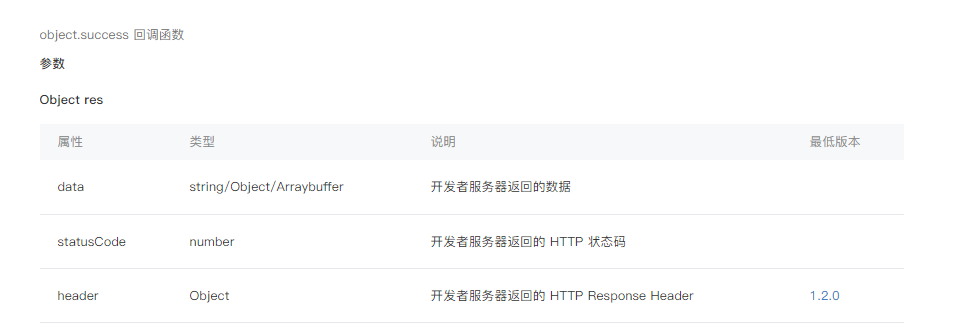
File
First, you need to encapsulate a request, know the required parameters, and how to call it.
The important parameters in the request are url data (the default request method here is post)
Chain operation in the way of promise
First step
Build a file api.js of a common function
Create a function myRequest and two parameters url data
const myRequest = (url,data) =>{ const baseUrl = 'XXX';//Here is the basic url const data = data || {};//Fault tolerant data processing, //If there is a required or frequent parameter in the project, it can be passed here if (wx.getStorageSync("sessionid")) { data.sessionid = wx.getStorageSync("sessionid"); } }
The second step
return a promise function
return new Promise((res,rej) => { wx.request({ url: baseUrl+url, method:"POST", data:data, header: { 'content-type': 'application/json' }, success(obj){ }, fail(err){ rej(err); } }) })
The third step
By this time, we have got the result in the applet success

image.png
In the result, we need to use data, but we can't directly take obj.data. Because success doesn't have to be 200, it may be 404, so we need to judge
xhr.status >= 200 && xhr.status < 300 || xhr.status == 304
So that's what the final code looks like
const myRequest = (url,data) =>{ const baseUrl = 'XXX'; const data = data || {}; if (wx.getStorageSync("sessionid")) { data.sessionid = wx.getStorageSync("sessionid"); } return new Promise((res,rej) => { wx.request({ url: baseUrl+url, method:"POST", data:data, header: { 'content-type': 'application/json' }, success(obj){ if (obj.statusCode >= 200 && obj.statusCode < 300 || obj.statusCode === 304){ res(obj.data); }else{ rej({ msg: `network error:${obj.statusCode}`, detail: obj }); } }, fail(err){ rej(err); } }) }) }
How to call
myRequest.myRequest('xxx', { a:1}).then(function(res){ console.log(res); }).catch(function(res){ console.log(res); })